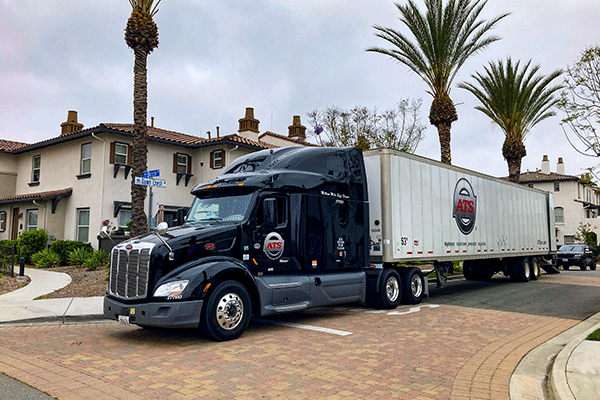
When a company decides to transition away from customer-routed freight operations and toward managing these processes in-house, there’s typically a single driving factor.
Sometimes, these businesses are hoping to gain greater control of their loading areas or to bring their customer’s a bit more value with each transaction. Both of these are worthwhile ventures and warrant the organizational change that routing freight can be.
For many businesses, though, the desire to route freight stems not from a want for control or a desire to outpace competitors on the road to “Most Helpful Company Ever”.
Instead, these businesses see the money-making opportunity that routing their own freight creates. When done correctly, arranging for the transport and distribution of your customer’s goods can generate income and push your bottom line straight north, toward greener pastures.
For you, this revelation may come as a surprise. To the unknowing observer, managing the movement of freight can feel like more trouble than it’s worth.
Though this process boasts its own set of advantages and disadvantages, which are certainly worth noting, you’ll like the results if you get it right.
Here at ATS, we’ve seen plenty of shippers hang the “we route freight” sign in their storefronts for one reason, and one reason only; handling and managing the movement of your business’s freight can make you money. . . lotsa money.
If you’re a company looking to fill a bit of empty space in your bank vault, you’ve come to the right place. Today’s article will leave you with a far better understanding of how to make money by routing your own freight and give you some tools to make this process as smooth as possible.
Money might not grow on trees, but this article is full of it. Let’s get started.
Where Are You Losing Money Right Now?
Without outlining where you’re losing out on money right now, the weight of this discussion simply wouldn’t land. Not the way it needs to anyway.
As you’re reading this sentence. . . and this shorter sentence . . and this one. . . your customers are routing their freight.
Let me rephrase that, your customers are paying another company to transport their freight — money that could’ve gone in that aforementioned bank vault.
But, instead of finishing their interaction with your business on the right note, your customers take their dollars elsewhere, in pursuit of a competent transportation solution.
Keep in mind, many companies in your business, industry and area handle freight transportation for their customers. And, I'm willing to bet many of their customers are either current, past or future customers of yours.
Your customers shouldn’t need to be transportation experts to do business with you.
They shouldn’t have to work in logistics day in and out, analyzing trends and developing relationships with transportation providers.
But, with a little bit of practice and a solid network of providers, you could become a transportation expert.
In a business where bringing value to each customer transaction often translates to dollars in your pocket, routing their freight for them can do just that.
And, as competencies are gained and the transportation world becomes your home, the convenience your customers receive through your business will far outpace the time you spend routing goods.
Intriguing right? Let’s continue.
How Will You Be Compensated for Routing Freight?
Like the other portions of your business, when routing freight, you’ll need to make your money in the margins. Between the total cost of getting goods moved from A to B, and the dollar amount charged to customers is where your earnings will lie.
Every transaction, although more expensive on your patron’s end, will create a bit more margin for you to walk away with. Initially, routing freight might not be pretty. There will certainly be kinks to flatten and a learning curve to round.
But, once you get the hang of this whole “transportation thing” turning more of a profit on each transaction will get easier. . . and easier.

How Can You Increase The Profit You Receive?
In the transportation industry, comprehensive expertise, familiarity between parties (a shipper and their providers) and consistent demands create efficiency— efficiency that leads to cost savings.
As your efficiencies sharpen and your requirements become predictable, a good transportation provider will easily cover your needs. When transitioning to routing customer freight, the relationship between a business and its providers can make or break the profitability of managing outbound shipments.
That said, as long as you avoid common mistakes when selecting a provider and manage your supply chain correctly, your profit will grow over time.
Nobody was born knowing how to route freight just like nobody was born with the ability to solve a Rubix Cube. Competencies are gained through trial and error. And, when it comes to routing your freight, competencies equate to increased margin.
Where Do Shippers Typically Overpay For Their Freight?
A crucial step toward fully monetizing your freight routing processes is to analyze where less experienced shippers fall short. Moving commodities from point A to B isn’t a simple process.
This industry is home to many intricacies and, without proper planning on the front-end and communication throughout, shippers can end up paying more than they need to.
More specifically, companies that route their freight find it difficult to get the most from their budget due to one, or more, of these reasons:
Their loading times are too long
The time it takes for you to load a truck after it arrives at your facility can really damage your bottom line. You see, truck drivers are only allowed to be actively on-duty for 14 total hours within a 24 hour period. Only 11 of these hours can be spent behind the wheel, with the remaining three dedicated to break periods.
Beyond this, a trucker's on-duty clock — known as their hours of service (HOS) — doesn’t stop running once they start their truck to begin the day.
As such, trucking companies and their drivers are highly motivated to get the most out of their assets — which only make money while their wheels are turning under a load. To do so, transportation providers commonly work accessorial charges into the final rates they charge their customers.
Although these charges come in several different shapes and sizes, “detention” and “layover” fees are directly tied to your loading times. Shippers run into trouble when prolonged loading times take a toll on their trucker’s clock. In these situations, extra charges can quickly get out of hand and increase transportation pricing exponentially.
If you’re hoping to make money routing your own freight, you’ll want to develop a system to expedite loading times. This will ensure that the freight rate you’re quoted by the provider you select is what you end up paying. In turn, this price stability will help you stick to the rates you give your customers and keep the money flowing in.
Related: How Do Loading Times Impact Freight Shipping Price?
Their Lead Time Isn’t Adequate
For your transportation provider — be it an asset company or freight brokerage — to secure your truck at a competitive price-point takes time. This is especially true when an influx of demand and a shortage of drivers makes finding last-minute capacity difficult.
To help you get the most competitive price for your transportation needs as possible, give your provider an adequate amount of lead time. Although it varies depending on your requirements, giving your partner 24-72 hours of notice before the moment your customer’s freight needs to load will help them find your truck.
Too often, shippers overpay because they’re unable to give their transportation providers this amount of lead time. Save money on your freight costs and make up the difference in what you charge your customers by providing proper lead time.
Related: How Does Lead Time Impact Freight Shipping Cost?
Their Appointment Times Are Inflexible
Flexibility in your pick-up appointment times — the window of time that you require drivers to arrive for loading — can go a long way toward helping your budget. Commonly, shippers end up paying more for their freight when a strict appointment makes it difficult for their carrier to accommodate their timeframes.
Although it’s not impossible to secure a truck for an 8 a.m. Monday morning pick-up — for example — it will cost more than finding one to meet an 8 a.m.-11 a.m. window.
Widen your margin and reduce your freight costs by adding some flexibility to your pick-up windows.
Related: 4 Out-Of-The-Box Ways to Save Money On Your Freight Rates
Make Your Customers The Hero
As you well know, yours isn’t the only business in the world with customers. The people purchasing your commodities have customers of their own, people that count on them to come through.
By asking your patrons to route their freight, you’re only making it more difficult for them to follow through down the line. The trickle-down effect, stemming from shoddy transportation management, can be damaging to multiple supply chains.
Help your customers avoid potential mishaps by positioning your company as an ally in this process. Businesses want to work with those that make their lives easier. Routing your customers' freight is one way to do just that and, you might be surprised to find out, they’re willing to pay for the help.
Your goals aren’t different from those held by the people who buy your products. Both of you want to become the supplier that always delivers in the minds of prospective customers.
Route their purchases for them. Get their products where they need them on time. Make some margin in the process. Watch your supply chain thrive and customer relationships blossom. It’s as simple as that.
If you’d like assistance hanging the “we route freight” sign in your window and filling the remaining space in your bank vault, reach out. Here at ATS we have a transportation expert ready and waiting to make you, and your customer, the supplier that always delivers.

